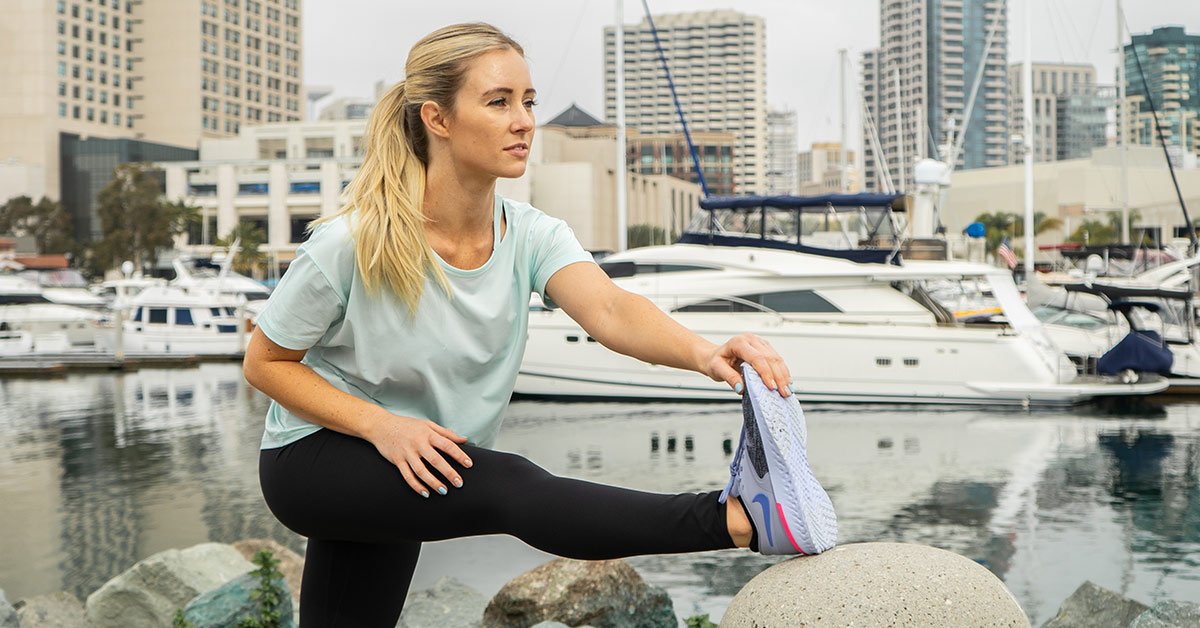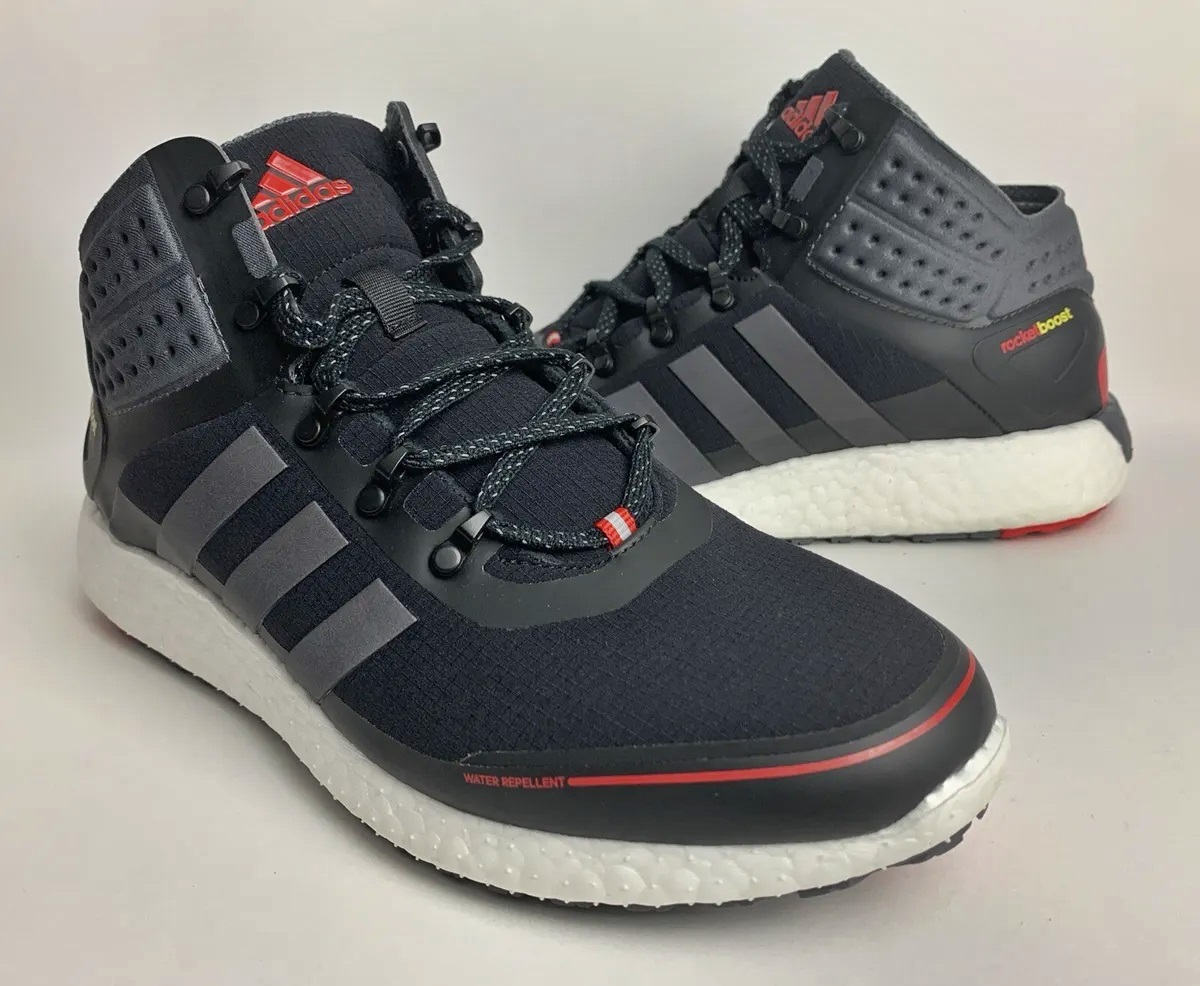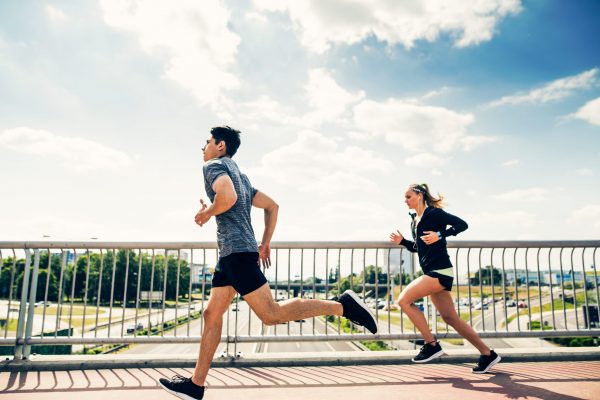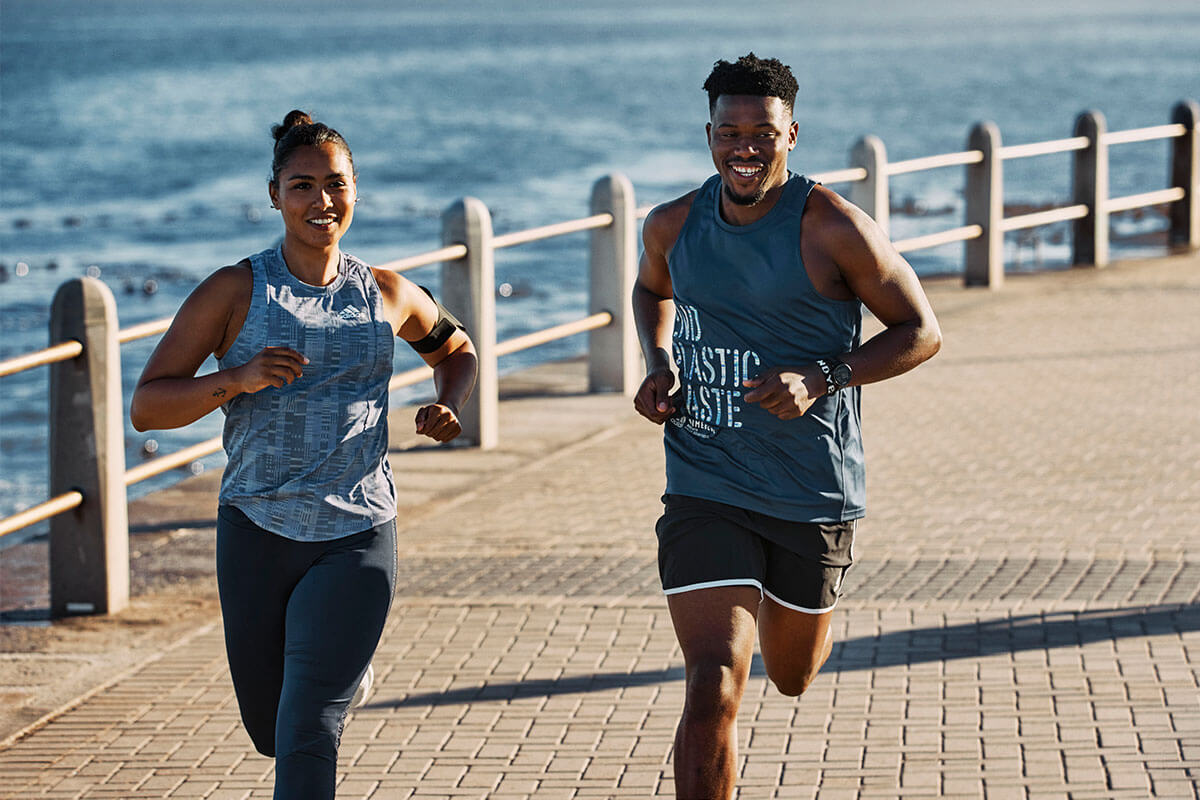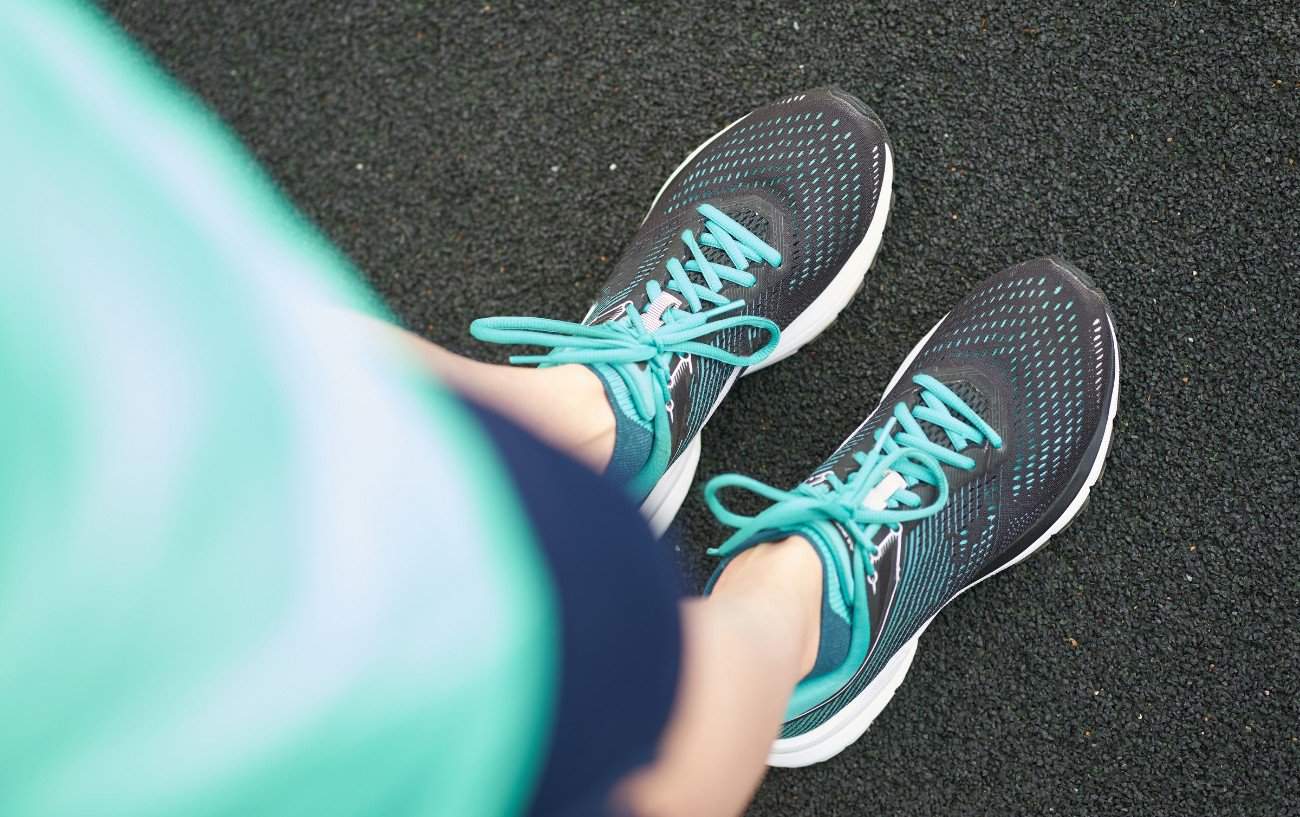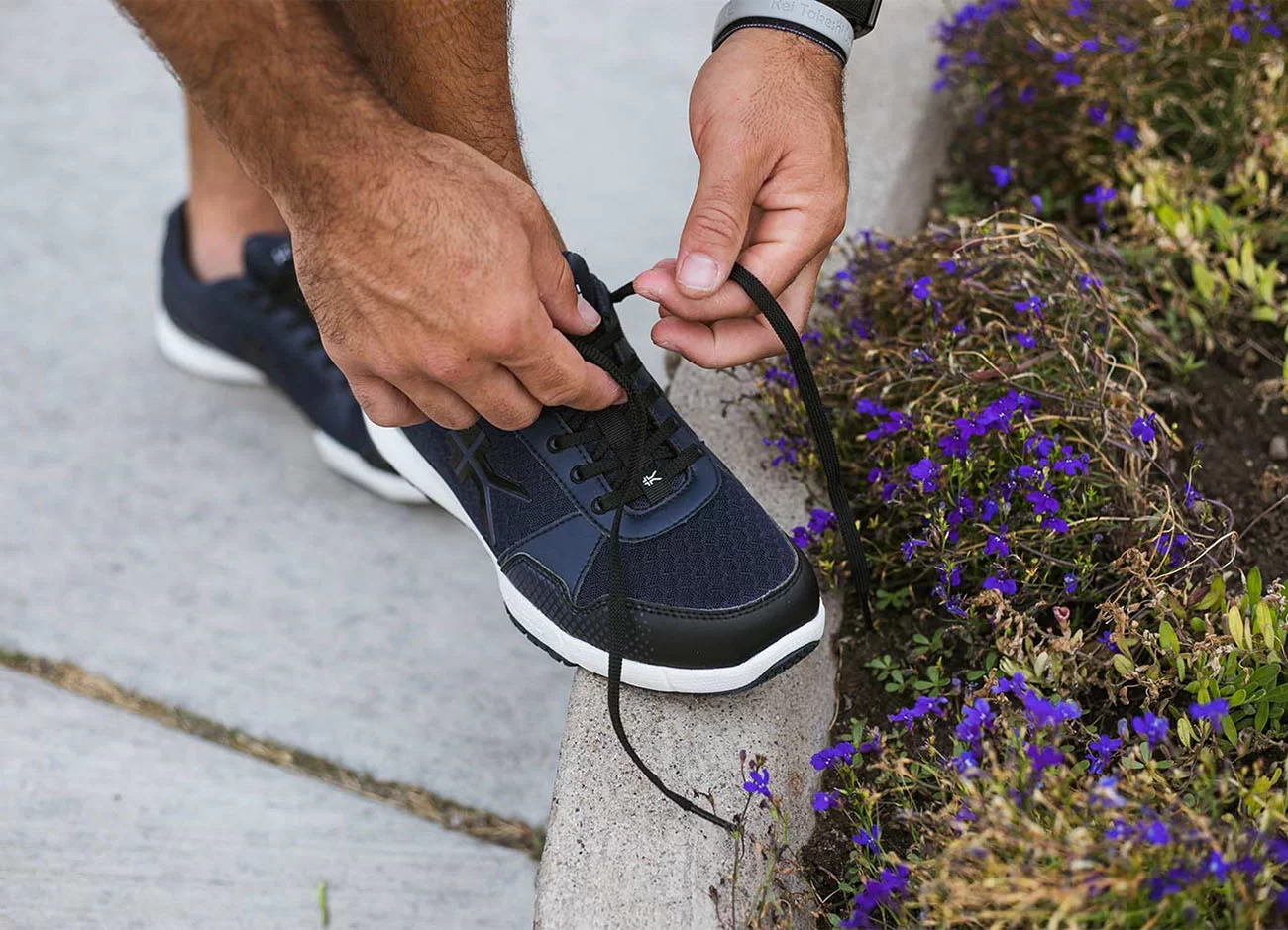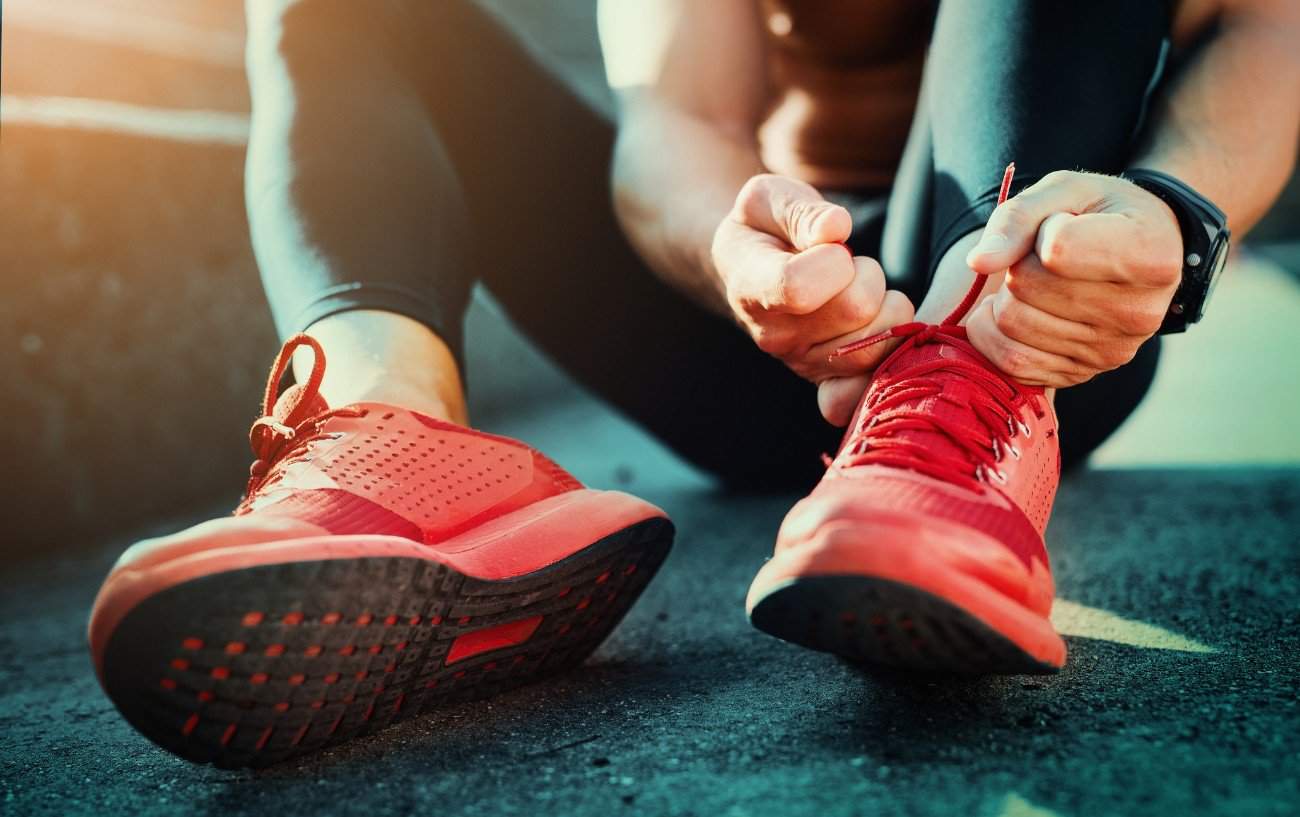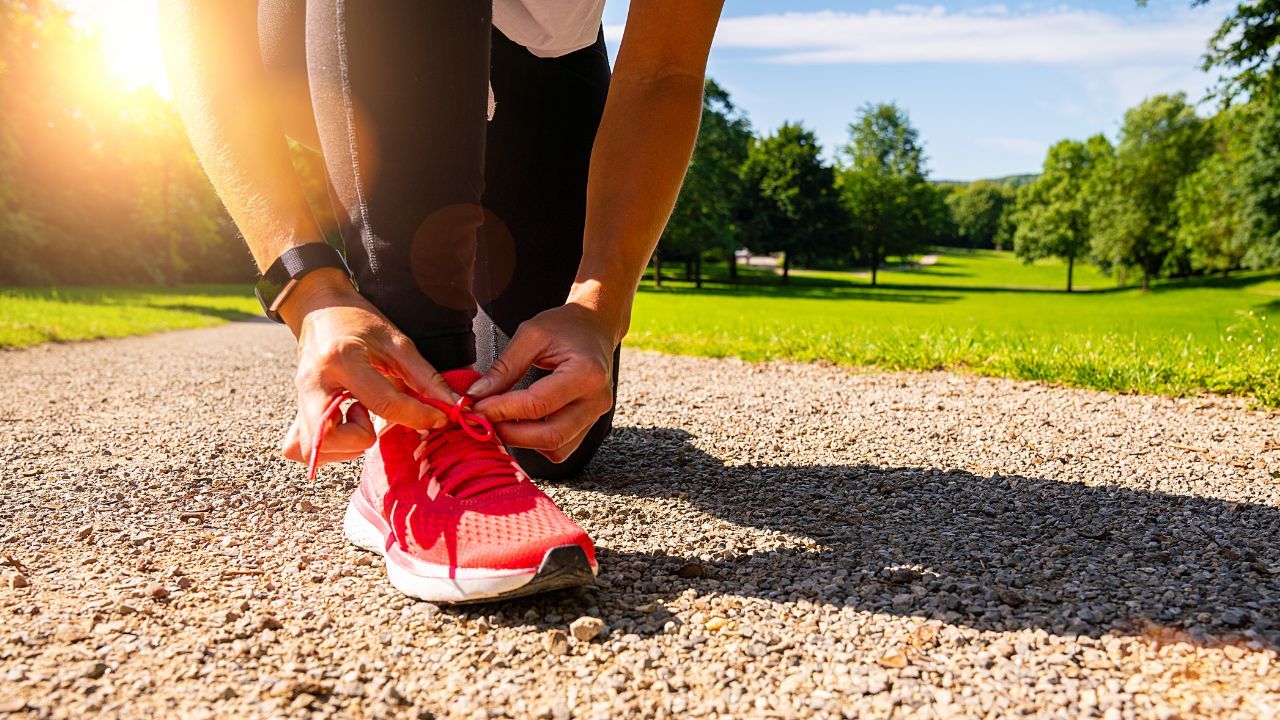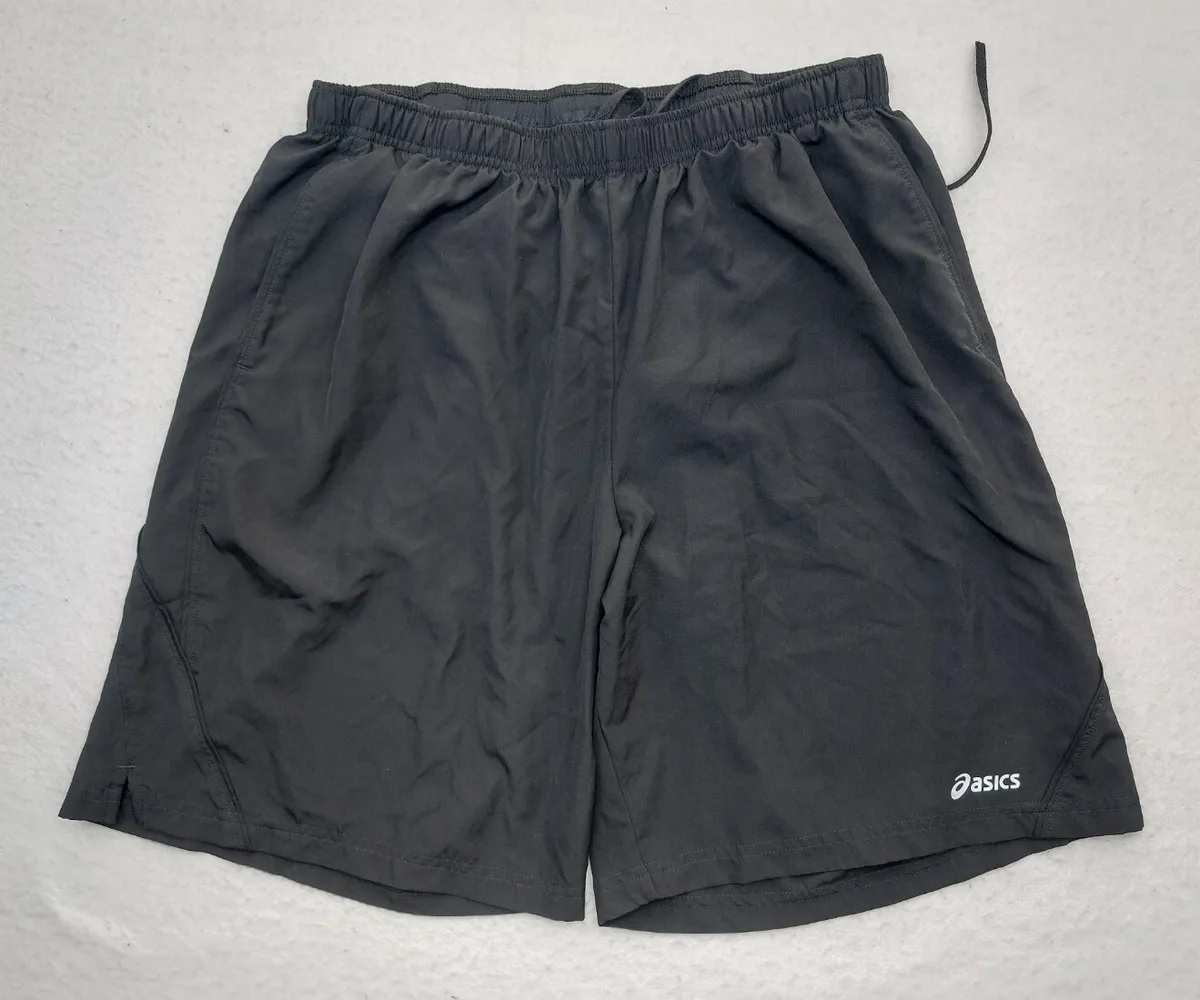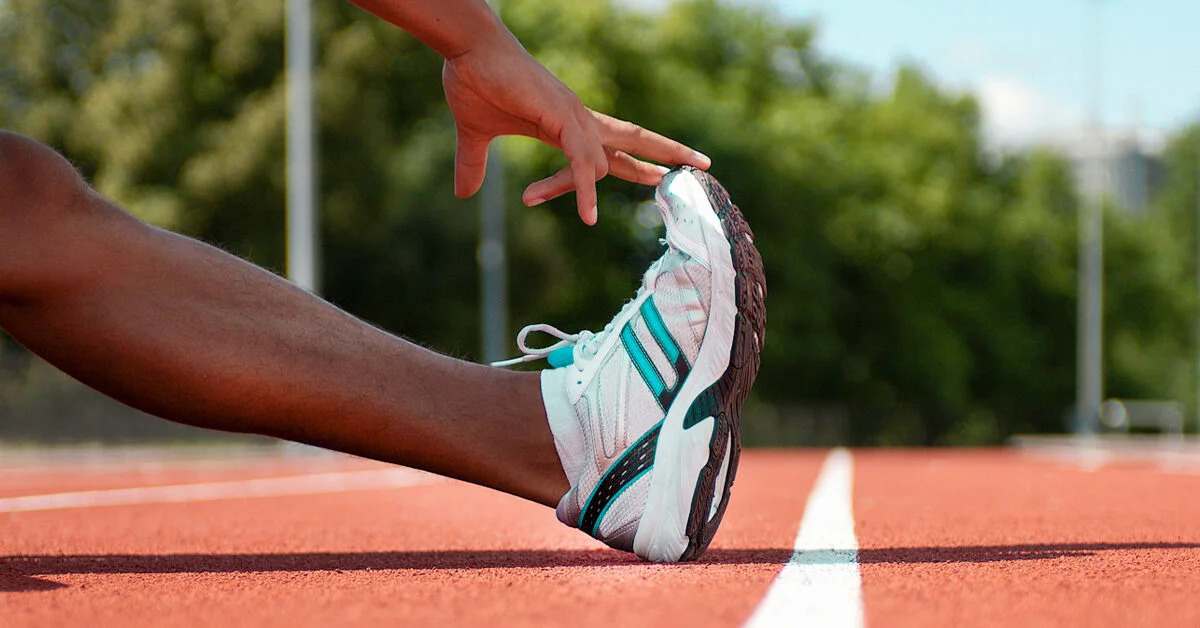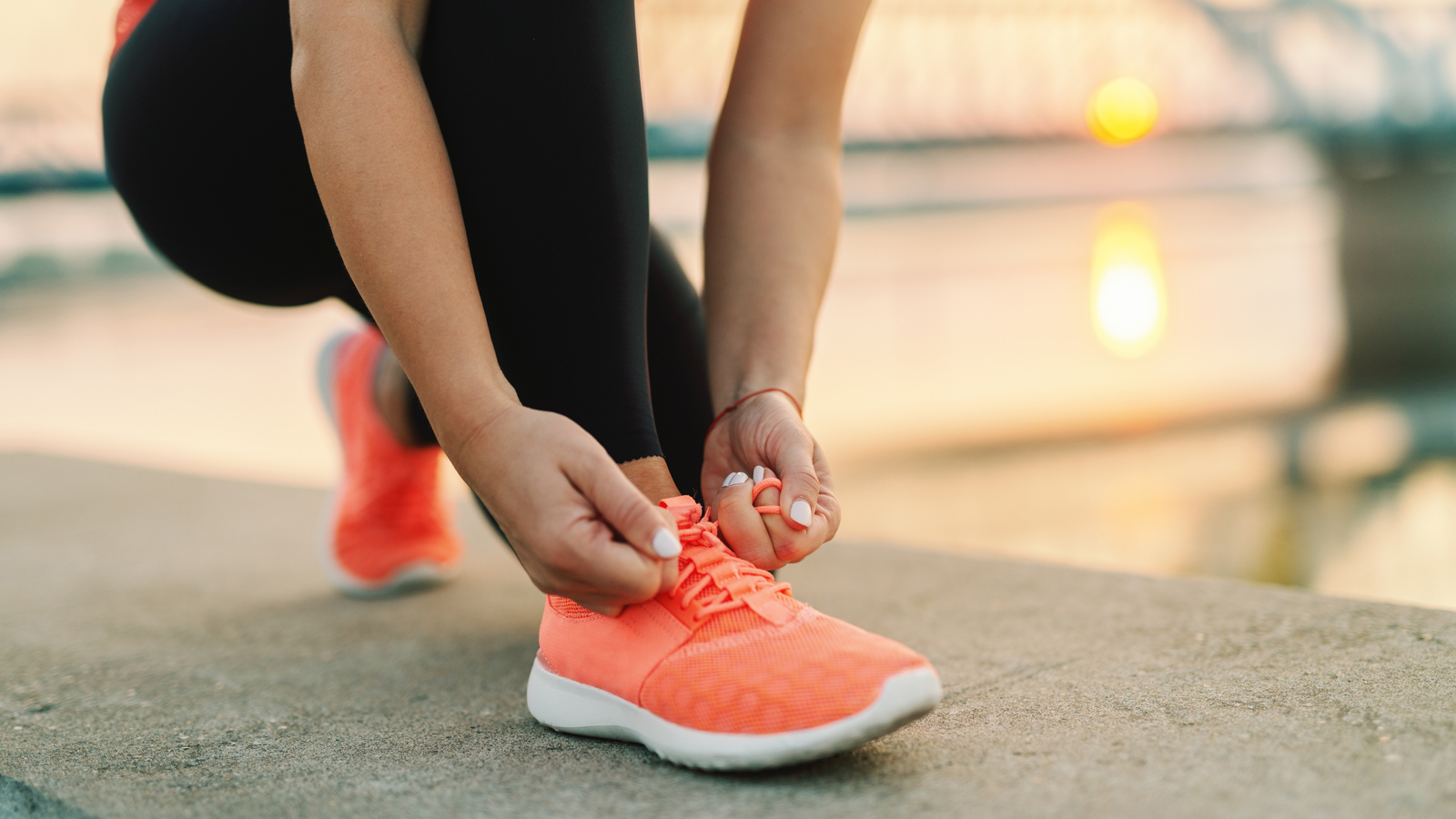

Featured
How Tight Should My Running Shoes Be
Modified: January 22, 2024
Find out the ideal fit for your featured running shoes. Learn how tight your running shoes should be to avoid discomfort and maximize performance.
Introduction
Choosing the right pair of running shoes is essential for every runner, and one important factor to consider is the tightness of the shoes. Finding the perfect fit can greatly impact your comfort, performance, and overall running experience. But how tight should your running shoes be? It’s a common question that often leads to confusion among runners.
While there is no one-size-fits-all answer to this question, there are several factors to consider when determining the appropriate tightness for your running shoes. In this article, we will explore these factors and provide some tips to help you find the right fit for your feet.
One of the key factors to consider when determining the tightness of your running shoes is the size and shape of your feet. Everyone’s feet are unique, and what feels comfortable for one person may not work for another. It’s important to measure your feet accurately and consider any specific characteristics, such as high arches or wide toes, that may require special attention.
Another factor to consider is the type of running you do. Different running activities, such as long-distance running or trail running, may require slightly different shoe fits. For example, long-distance runners may prefer a snug fit to provide stability and prevent excessive foot movement, while trail runners may opt for a slightly looser fit to accommodate the rugged terrains they navigate.
The time of day when you try on running shoes can also influence how they fit. Feet tend to swell and expand throughout the day, especially during physical activity. So, it’s generally recommended to try on shoes in the afternoon or evening when your feet are at their largest to ensure a comfortable fit during your runs.
Ultimately, finding the right fit is a balance between a snug feel and allowing enough room for your toes to move. Too tight shoes can lead to discomfort, pain, blisters, and even toenail problems, while shoes that are too loose can cause instability and increase the risk of injuries.
In the following sections, we will delve deeper into how to measure your shoe fit, provide tips for finding the right fit, and highlight common mistakes to avoid. So, let’s explore the world of running shoes and discover how to find the perfect fit for your feet!
Factors to Consider
When it comes to determining the tightness of your running shoes, there are several important factors to consider. Understanding these factors will help you make an informed decision and find the perfect fit for your feet.
Foot Size and Shape: Every person has different foot size and shape characteristics. Measuring your feet accurately and knowing your specific foot attributes, such as high arches or wide toes, can guide you in finding the right fit. Keep in mind that your foot size and shape can change over time, so it’s important to measure your feet periodically.
Type of Running: The type of running you do can also influence the tightness of your shoes. If you primarily engage in long-distance running, you may prefer a snug fit to provide stability and prevent excessive foot movement. On the other hand, trail runners might opt for a slightly looser fit to accommodate the more rugged terrains they navigate.
Time of Day: Your foot size can fluctuate throughout the day, especially during physical activity. To ensure a comfortable fit, it’s recommended to try on shoes in the afternoon or evening when your feet are at their largest. This will help you avoid purchasing shoes that are too tight later on.
Sock Thickness: The thickness of the socks you wear while running can impact the fit of your shoes. If you typically wear thicker socks for added cushioning or warmth, you may need slightly roomier shoes. Conversely, if you prefer thinner socks, a snugger fit might be more appropriate.
Personal Preference: Lastly, personal preference plays a significant role in determining the tightness of running shoes. Some runners prefer a snug feel for a more locked-in and responsive sensation, while others prefer a bit more room for added comfort. Experiment with different levels of tightness to find what works best for you.
By considering these factors, you can make a better-informed decision when choosing the tightness of your running shoes. Remember that finding the right fit is a balance between adequate support and allowing enough room for your toes to move freely. In the next sections, we will explore how to measure your shoe fit and provide tips for finding the perfect fit for your feet.
Measuring Your Shoe Fit
Before you can determine the appropriate tightness of your running shoes, it’s important to measure your shoe fit accurately. Here are some steps to help you get an accurate measurement:
- Measure your feet: Use a ruler or a measuring tape to measure the length of your feet from heel to toe. Take measurements for both feet as they may differ slightly. Note down the longer measurement as your foot length.
- Consider width: To assess the width of your feet, measure the widest part of your foot horizontally. This measurement will help you determine if you have narrow, medium, or wide feet.
- Use a size chart: Many shoe brands provide size charts that correlate foot measurements to shoe sizes. Use these charts as a general guideline to find your starting point for shoe sizing.
In addition to measuring your feet, it’s recommended to try on shoes in person whenever possible. This gives you the opportunity to evaluate the fit and feel of the shoes firsthand. If buying online, make sure to check the return policy in case the shoes don’t fit as expected.
Remember that shoe sizing can vary between brands and even between different shoe models within the same brand. Don’t be fixated on a particular shoe size; instead, prioritize the overall fit and comfort of the shoes.
Once you have measured your feet and have an idea of your size, it’s time to try on the shoes. Put on the socks you typically wear during running and lace up the shoes to your desired level of tightness. Take a few steps and pay attention to how the shoes feel.
Keep in mind that it’s normal for new shoes to feel slightly snug initially, as they will mold and stretch to your feet over time. However, if you experience any discomfort, pain, or pressure points, try adjusting the lacing or consider a different shoe size.
Ultimately, the goal is to find a pair of running shoes that provides a comfortable and secure fit. Don’t hesitate to try on multiple sizes and brands to find the one that suits your feet the best. In the following sections, we will share some practical tips for finding the right fit and highlight common mistakes to avoid when determining shoe tightness.
Tips for Finding the Right Fit
When it comes to finding the right fit for your running shoes, there are several tips that can help guide you in the process. Consider implementing the following tips to ensure a comfortable and customized fit:
- Visit a specialty running store: These stores often have knowledgeable staff who can help you find the right shoes for your feet. They can analyze your gait, measure your feet, and offer expert advice on the best shoe options for your running style.
- Try on shoes in the afternoon: As mentioned earlier, our feet tend to swell throughout the day. By trying on shoes in the afternoon or evening, you can ensure a more accurate fit for your feet during your runs.
- Bring your own socks: When trying on running shoes, wear the same type of socks you typically wear during your runs. This will give you a better idea of how the shoes will feel during your workouts.
- Walk and jog in the shoes: Don’t be afraid to take a few steps or even a short jog in the store to test the shoes’ comfort and responsiveness. Pay attention to any pressure points or areas of discomfort.
- Allow room for your toes: Your toes should have enough space to wiggle comfortably. There should be about a thumb’s width of space between the tip of your longest toe and the front of the shoe.
- Consider the lockdown: The shoes should provide a secure lockdown around your midfoot and heel without being too tight. Look for a snug fit in these areas to prevent foot slippage and maintain stability.
- Don’t ignore width considerations: Different shoe models come in various width options. If you have wider feet, opt for shoes with a wider toe box to ensure proper fit and avoid unnecessary pressure on the sides of your feet.
- Trust your instincts: While it’s essential to consider expert recommendations and measurements, ultimately, trust your own comfort and intuition. If a shoe feels right and provides the necessary support and flexibility, it’s likely a good fit for you.
Remember that finding the perfect fit may require some trial and error. Each runner is unique, and what works for someone else may not work for you. Therefore, take the time to explore different brands, models, and sizes until you find the shoes that feel like they were made for your feet.
A well-fitting pair of running shoes can contribute greatly to your overall running experience, helping you stay comfortable, prevent injuries, and perform at your best. In the following section, we will discuss some common mistakes to avoid when determining the tightness of your running shoes.
Common Mistakes to Avoid
When it comes to determining the tightness of your running shoes, there are some common mistakes that many runners make. By being aware of these mistakes, you can make more informed decisions and ensure a better fit for your feet. Here are some common mistakes to avoid:
- Choosing the wrong shoe size: Many runners make the mistake of relying solely on their usual shoe size without considering other factors such as foot length and width. Always measure your feet and refer to size charts to find the most accurate shoe size.
- Ignoring foot width: Foot width is just as important as foot length when it comes to finding the right fit. Take into account your foot width when choosing shoes, and opt for models that come in wider options if needed.
- Not considering the type of running: Different types of running activities require slightly different shoe fits. Don’t overlook this aspect when choosing your running shoes. Consider the specific needs of your running style, whether it’s long-distance running, trail running, or sprinting.
- Skipping the shoe fitting process: Trying on shoes in person and testing them by walking or jogging is crucial to assess their comfort and fit. Skipping this step and buying shoes online without proper evaluation can lead to ill-fitting shoes.
- Choosing aesthetics over functionality: While it’s natural to be attracted to stylish and visually appealing shoes, it’s important not to prioritize looks over functionality. Always prioritize the fit, support, and overall comfort of the shoes.
- Not considering foot changes over time: Your feet can change in size and shape due to various factors such as age, weight changes, and pregnancy. Regularly measure your feet and reassess your shoe size to accommodate any changes.
- Getting stuck in old habits: Just because a certain brand or model worked for you in the past doesn’t mean it will always be the best fit. Be open to trying new brands and models that may provide a better fit and improved running experience.
- Ignoring discomfort: Discomfort is a clear sign that something is not right with your shoes. Don’t ignore any pain, pressure points, or discomfort during your test runs. Address these issues by adjusting the lacing or trying a different size or model.
Avoiding these common mistakes will enhance your chances of finding the right fit and enjoying a more comfortable and enjoyable running experience. Keep these tips in mind as you search for the perfect running shoes for your feet.
Adjusting Your Shoe Tightness
Once you’ve found a pair of running shoes that seem to be the right fit, it’s important to understand that the tightness may need some adjustment. Everyone has different preferences and needs when it comes to the snugness of their shoes. Here are some tips on how to adjust the tightness of your running shoes:
- Experiment with lacing techniques: Different lacing techniques can provide varying levels of tightness and support. Try different methods like the heel lock lacing or the runner’s loop to customize the fit according to your preference.
- Use additional insoles or inserts: If you find your shoes to be too loose, you can try adding an extra insole or insert to provide a snugger fit. This can be especially helpful if you have low arches or need more support in specific areas.
- Try different socks: The type of socks you wear can impact the tightness of your shoes. Thicker socks can create a tighter fit, while thinner socks can provide more room. Experiment with different sock thicknesses to find the right balance for your feet.
- Consider adjustable features: Some running shoe models come with adjustable features such as straps or laces that allow you to fine-tune the tightness. Take advantage of these features to customize your shoe fit.
- Listen to your feet: Pay attention to any discomfort or unusual sensations during your runs. Your feet will provide valuable feedback on the tightness of your shoes. If you experience pain or discomfort, make adjustments accordingly.
- Re-evaluate periodically: Keep in mind that our feet can change in size or shape over time. It’s essential to re-evaluate the tightness of your shoes periodically. Measure your feet again, reassess your shoe fit, and make any necessary adjustments.
- Consult a professional: If you’re unsure about how to adjust the tightness of your shoes, consider seeking advice from a knowledgeable professional, such as a shoe fitting specialist or a podiatrist. They can provide personalized recommendations based on your specific foot needs.
Remember, finding the perfect tightness is a matter of trial and error. Be patient and willing to make adjustments until you achieve the desired level of comfort and support. By fine-tuning the tightness of your running shoes, you can enhance your running performance and reduce the risk of injuries.
Signs of an Improper Fit
It’s vital to recognize the signs of an improper fit when it comes to your running shoes. Wearing ill-fitting shoes can lead to discomfort, pain, and even injuries. Here are some signs to look out for that indicate your shoes may not be the right fit:
- Blisters and hotspots: If you consistently experience blisters or hotspots on your feet after running, it could be a sign of friction caused by tight or poorly fitting shoes.
- Persistent foot pain: Foot pain that persists even after you’ve taken a break from running could indicate that your shoes are not providing the necessary support and cushioning. This may be a result of tightness or improper fit.
- Toenail problems: If your toenails are discolored, bruised, or develop black spots, it could be a sign that your shoes are too tight and causing pressure on your toes.
- Foot numbness or tingling: If your shoes are too tight, they can compress nerves in your feet, leading to numbness or tingling sensations. This should be addressed promptly, as it can cause discomfort and potentially more serious issues.
- Foot fatigue and cramping: Shoes that are too tight can restrict blood circulation, leading to foot fatigue and cramping. If you regularly experience these symptoms during or after runs, it may be a sign of improper shoe fit.
- Unstable footing: Shoes should provide a secure and stable fit. If you find yourself constantly readjusting or feeling unstable while running, it could be a sign that your shoes are either too loose or too tight.
- Excessive wear patterns: Take a look at the wear patterns on the outsoles of your shoes. Uneven or excessive wear in specific areas may indicate that your shoes are not fitting properly and are putting excess pressure on certain parts of your feet.
If you notice any of these signs, it’s crucial to address the issue promptly. Take the time to reassess your shoe fit, make any necessary adjustments, or consider consulting a specialist to ensure you’re wearing the right shoes for your feet.
Remember, your running shoes should provide comfort, support, and protect your feet from unnecessary pain and injuries. Being proactive and attentive to the signs of an improper fit will help you optimize your running experience and keep you on the path to achieving your running goals.
Conclusion
When it comes to finding the right tightness for your running shoes, there is no one-size-fits-all answer. It’s a highly individualized process that requires considering factors such as foot size, running type, personal preference, and adjusting as necessary. By being mindful of these factors and following the tips provided, you can ensure a comfortable and well-fitting pair of running shoes.
Remember to measure your feet accurately, try on shoes in person, and consider the specific needs of your running activities. Don’t be afraid to experiment with different lacing techniques, socks, and adjustments to achieve a customized fit. Pay attention to the signs of an improper fit, such as blisters, foot pain, or instability, and take action to address the issue promptly.
Ultimately, finding the right tightness for your running shoes is about finding the balance between comfort and support. Trust your instincts and listen to your feet, as they will guide you in finding the perfect fit. Taking the time to find the ideal tightness will enhance your running experience, reduce the risk of injuries, and allow you to perform at your best.
So, lace up your shoes, hit the road, and enjoy running in a pair of shoes that feels like they’re made for your feet. Happy running!
